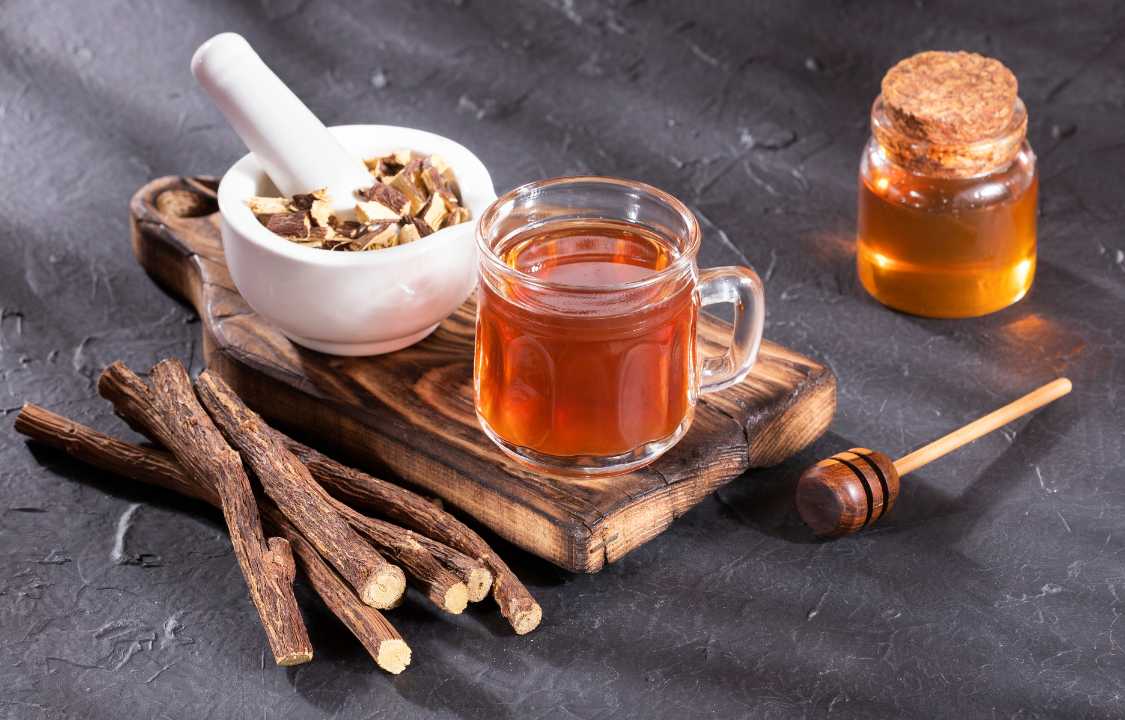Health Benefits, Health Care
Licorice Root During Pregnancy: Why You May Want To Avoid It
Pregnancy is a life-altering journey that necessitates numerous lifestyle adjustments, particularly in terms of exercise and nutrition. Expectant mothers often receive guidance on the recommended amount of exercise per week and dietary choices that emphasize essential nutrients such as iron and folate, as advised by the National Institute of Diabetes and Digestive and Kidney Diseases (NIDDK). Simultaneously, healthcare providers may caution against certain foods, such as licorice, due to potential harm to both the mother and the developing baby during pregnancy.
The inclusion of licorice root—and, consequently, licorice itself—on the list of foods to avoid during pregnancy may come as a surprise to many. A study conducted by Finnish researchers and published in the March 2017 issue of the American Journal of Epidemiology highlights the importance of pregnant individuals refraining from consuming excessive amounts of licorice root or black licorice candy.
Licorice root, as defined by the National Center for Complementary and Integrative Health (NCCIH), is a botanical ingredient that can be found in various regions, including Europe, Asia, and the Middle East. It is available in dried or capsule form and is often utilized to address ailments such as ulcers, stomach discomfort, sore throats, and viral infections. Additionally, licorice root imparts its distinctive flavor to a range of food and tobacco products. Notably, the compound glycyrrhizin, responsible for licorice’s characteristic taste, is derived from the licorice plant. The FDA’s additives list identifies glycyrrhizin as “licorice and derivatives (ammoniated glycyrrhizin, glycyrrhiza).”
Research has indicated that the licorice plant may have adverse health effects, including bloating and water retention, which can occur during pregnancy, as demonstrated in a June 2021 study published in Heliyon. Therefore, it becomes evident why researchers have sought to explore the connection between licorice root consumption and its potential impact on pregnancy.
The Relationship Between Licorice Root and Pregnancy
The study published in the American Journal of Epidemiology found that prenatal exposure to the sweet-tasting herb could be associated with early puberty, reduced IQ, and behavioral issues in children. In essence, if licorice was consumed during pregnancy, the developing fetus could have been exposed to its effects in the womb, potentially leading to these consequences later in life.
The study compared cognitive and memory test results for 378 children, with an average age of 13, whose mothers had either consumed minimal to no licorice during pregnancy or had ingested substantial amounts—defined as more than 500 milligrams of glycyrrhizin per week (approximately equivalent to 8 ounces of pure licorice root).
Although the study inquired only about the quantities and brands of “licorice-containing confectioneries” consumed by the women, glycyrrhizin can also be found in chewing gum, cookies, ice creams, herbal teas, and various beverages.
Results revealed that children exposed to substantial levels of glycyrrhizin in utero exhibited poorer cognitive reasoning abilities, scoring approximately 7 points lower on IQ tests than those with minimal or no exposure. Additionally, they performed more poorly on memory assessments and, according to parental reports, were more than three times as likely to exhibit symptoms of attention deficit hyperactivity disorder (ADHD).
For the female participants in the study, higher exposure to glycyrrhizin was also linked to earlier and more advanced puberty. Girls in the high-licorice exposure group were, on average, over an inch taller and weighed approximately 18 pounds more than their counterparts in the low-licorice group.
Contemplating the Consumption of Licorice Root or Licorice During Pregnancy
The researchers of the American Journal of Epidemiology study made adjustments to their findings to account for various factors, including the mother’s age, smoking habits, alcohol and caffeine consumption, and stress levels during pregnancy. They also considered the children’s licorice consumption. Additionally, the authors noted that their findings were akin to the effects of binge drinking during pregnancy on children’s cognitive and behavioral challenges.
Nevertheless, the study could not definitively establish a cause-and-effect relationship between licorice exposure and the diverse outcomes observed in the children. The researchers acknowledged that other factors might have contributed to the results as well.
In Finland, where black licorice and “salty licorice” candies, also known as salmiakki, are popular treats, the government has already issued warnings against consuming glycyrrhizin during pregnancy. While occasional consumption of licorice-flavored sweets or ice cream is not considered harmful, national guidelines categorize licorice as generally “not recommended” for pregnant individuals.
Moreover, the authors of the study made a significant point of stating, “We cannot ascertain the extent to which our findings are applicable to countries where licorice consumption is less common.” This acknowledgment underscores the need for regional context when interpreting their results. Nonetheless, they drew attention to the fact that even in countries like the United States, where licorice consumption may not be as widespread as in some other parts of the world, daily glycyrrhizin intake can still reach substantial levels, soaring as high as 215 milligrams. This observation implies that there is a segment of the population in such countries that might stand to benefit from curtailing their licorice consumption during pregnancy to mitigate potential risks.
Specifically, in the United States, the NCCIH has recommended that pregnant individuals avoid consuming significant amounts of licorice root in food or using licorice root as a supplement.
In a manner similar to the stern warnings issued against alcohol consumption during pregnancy, the diligent researchers underscored the critical significance of enlightening individuals regarding the potential hazards linked to excessive licorice consumption. Nevertheless, it is worth mentioning that licorice need not be categorically prohibited. In the end, it is prudent to engage in a thorough and open dialogue regarding dietary alterations during pregnancy with a qualified healthcare provider, particularly if licorice occupies a distinct and cherished position in one’s culinary preferences.

